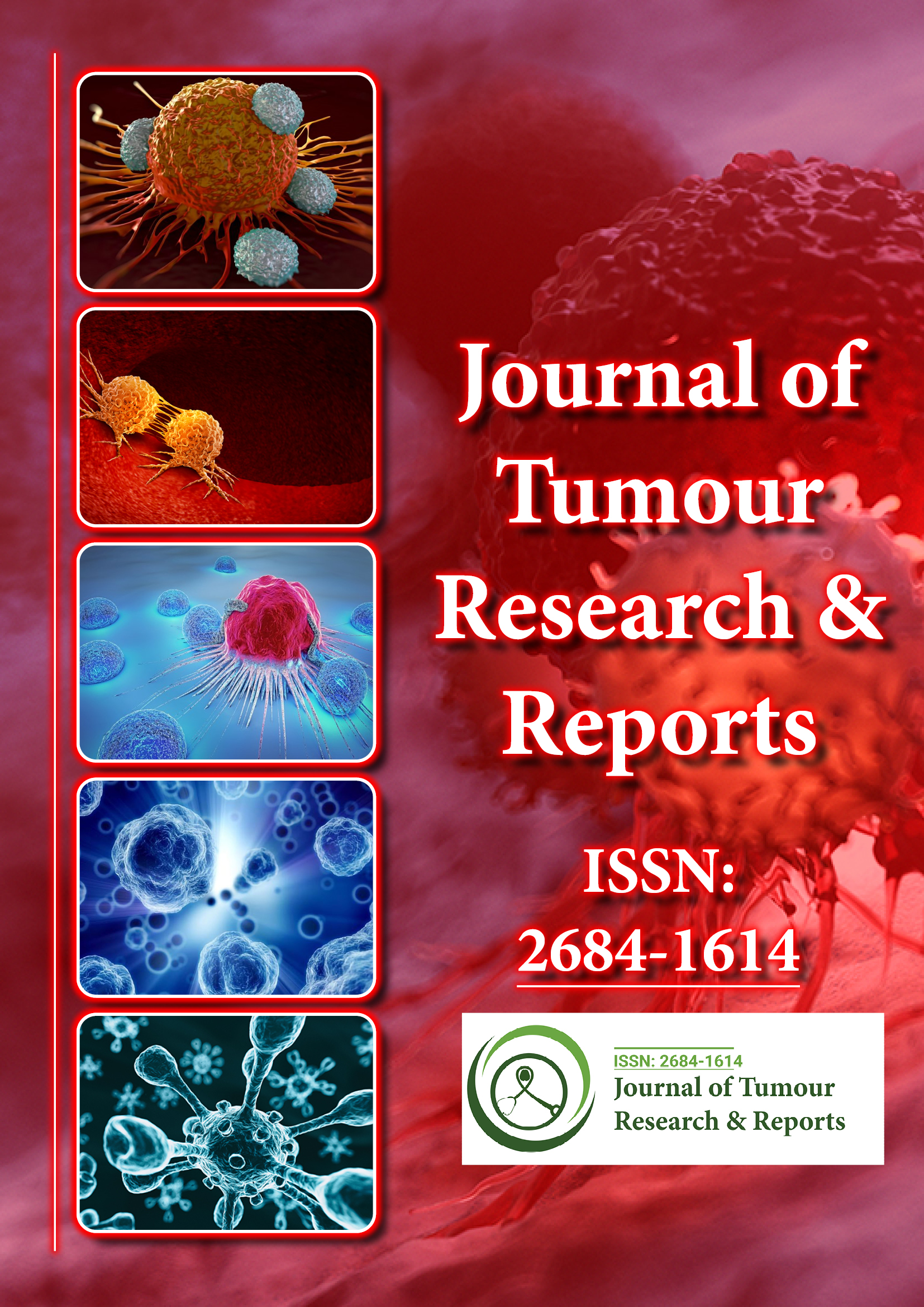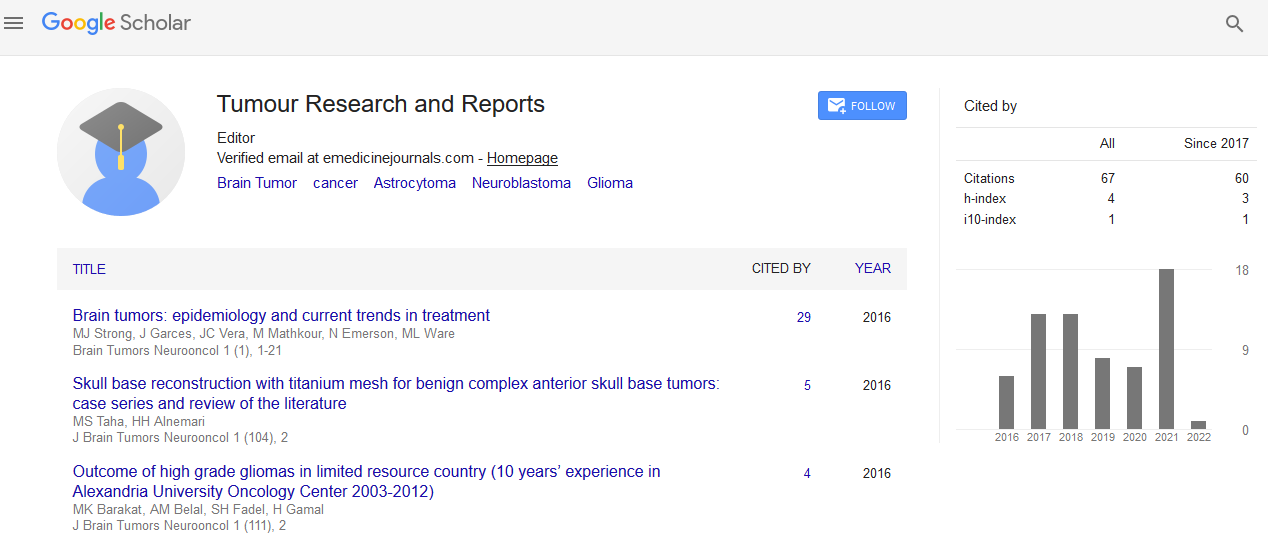Indexed In
- RefSeek
- Hamdard University
- EBSCO A-Z
- Google Scholar
Useful Links
Share This Page
Journal Flyer

Open Access Journals
- Agri and Aquaculture
- Biochemistry
- Bioinformatics & Systems Biology
- Business & Management
- Chemistry
- Clinical Sciences
- Engineering
- Food & Nutrition
- General Science
- Genetics & Molecular Biology
- Immunology & Microbiology
- Medical Sciences
- Neuroscience & Psychology
- Nursing & Health Care
- Pharmaceutical Sciences
Opinion - (2023) Volume 8, Issue 4
The Role of FDG-PET in Optimizing Follicular Lymphoma Treatment
Demetrios Albanes*Received: 14-Nov-2023, Manuscript No. JTRR-23-23183; Editor assigned: 17-Nov-2023, Pre QC No. JTRR-23-23183 (PQ); Reviewed: 01-Dec-2023, QC No. JTRR-23-23183; Revised: 08-Dec-2023, Manuscript No. JTRR-23-23183 (Q); Published: 15-Dec-2023, DOI: 10.35248/2684-1614.23.8:205
Description
Follicular Lymphoma (FL) is a slow-growing, indolent form of Non-Hodgkin lymphoma characterized by the abnormal proliferation of B-lymphocytes. It accounts for approximately 20% of all cases of Non-Hodgkin lymphoma and is known for its variable clinical course, with some patients experiencing long periods of remission while others require ongoing treatment. Accurate staging, monitoring, and assessment of treatment response are essential for managing FL effectively, and one tool that has revolutionized this process is 2-deoxy-2-[18F] Fluoro-D- Glucose Positron Emission Tomography (FDG-PET).
Understanding FDG-PET
FDG-PET is a non-invasive imaging technique that uses a radiolabeled glucose analog (18F-Fluorodeoxyglucose, or FDG) to visualize metabolic activity in tissues. It is based on the principle that cancer cells have an increased rate of glucose metabolism compared to normal cells. When FDG is injected into the patient's bloodstream and accumulates in areas with high glucose uptake, a PET scanner can detect and create detailed images of these regions. Here are several key aspects of FDG-PET in FL management:
Staging and initial assessment: When a patient is newly diagnosed with FL, accurate staging is significant to determine the extent of the disease and select the appropriate treatment strategy. FDG-PET is highly effective in this regard. It can identify areas of hyper metabolism, indicating active lymphoma involvement in lymph nodes, bone marrow, and extra nodal sites. This helps oncologists create a comprehensive treatment plan altered to the patient's disease burden.
Response assessment: After initiating treatment for FL, assessing treatment response is essential to measure its effectiveness and adjust the therapeutic approach if necessary. FDG-PET plays a significant role in response assessment, allowing oncologists to differentiate between residual active disease, scar tissue, or inflammation. This information guides decisions about continuing therapy or adopting a watchful waiting approach.
Monitoring disease progression: FL is characterized by its relapsing and remitting nature, and close monitoring is essential to detect disease progression early. FDG-PET scans are valuable for tracking changes in metabolic activity over time. If a previously identified lesion becomes more metabolically active, it may indicate disease relapse, prompting further evaluation and consideration of alternative treatments.
Altered treatment strategies: The information obtained from FDG-PET scans can help tailor treatment strategies for individual patients. For example, if a patient has localized disease, radiation therapy may be a suitable option. In contrast, patients with extensive disease may benefit from systemic therapies such as chemotherapy or immunotherapy. FDG-PET helps determine the most appropriate treatment approach based on the specific characteristics of the disease.
Prognostic value: FDG-PET also has prognostic value in FL management. Studies have shown that the degree of metabolic activity measured by Standardized Uptake Value (SUV) on FDG- PET scans correlates with prognosis. Patients with higher SUV values tend to have a less favorable outcome, while those with lower SUV values often experience longer periods of remission.
Challenges and considerations
While FDG-PET is a powerful tool in FL management, there are some challenges and considerations to keep in mind:
False Positives: FDG-PET can sometimes yield false-positive results, as increased glucose metabolism can also occur in non- malignant conditions like infections or inflammation. Clinicians must carefully interpret the results in conjunction with other clinical information.
Radiation Exposure: FDG-PET involves exposure to ionizing radiation, which should be minimized, especially for patients who require multiple scans over time. The benefits of the information gained from FDG-PET must outweigh the associated risks.
Cost and Availability: FDG-PET may not be readily available in all healthcare settings, and it can be costly. Healthcare providers must consider the availability and affordability of this imaging modality when making diagnostic and treatment decisions.
In conclusion, FDG-PET has transformed the management of follicular lymphoma by providing valuable insights into disease staging, response assessment, monitoring, and prognostication. Its ability to visualize metabolic activity in lymphoma lesions has made it an indispensable tool for oncologists when making critical decisions about patient care. As technology and research in the field of PET imaging continue to advance, FDG-PET is likely to play an even more significant role in improving the outcomes and the quality of the life for individuals living with follicular lymphoma.
Citation: Albanes D (2023) The Role of FDG-PET in Optimizing Follicular Lymphoma Treatment. J Tum Res Reports. 8:205.
Copyright: © 2023 Albanes D. This is an open access article distributed under the terms of the Creative Commons Attribution License, which permits unrestricted use, distribution, and reproduction in any medium, provided the original author and source are credited.

